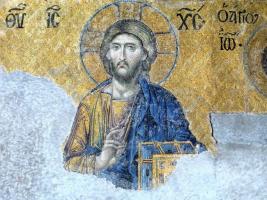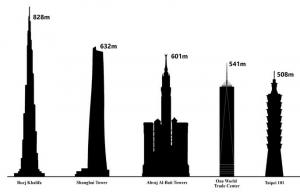Tal Mahal: its characteristics, history and meaning
Taj Mahal means "crown of palaces" and is one of the seven wonders of the world. It was built between 1631 and 1653 in Agra, India. It is a mausoleum dedicated to the favorite wife of Emperor Shah Jahan, named Arjumand Banu Begum, known as Mumtaz Mahal. Discover its main characteristics, history and meaning.
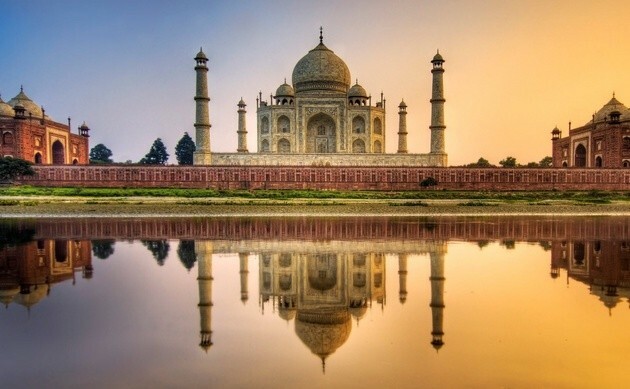
Iconic features of the Taj Mahal
It is a model of engineering and architecture solutions
To realize the Taj Mahal not only had to achieve a very high level of beauty. it was necessary to create an almost eternal structure, which would account for Jahan's love for his favorite wife, and it was also necessary to do it quickly. Such was the desperation of the emperor!
Therefore, they turned to various architects, including Ustad Ahmad Lahauri and Ustad Isa, in order to develop the different stages of the project. Thus, everyone had to work to find solutions to the demands of the emperor, which were not easy to meet.
Foundation of the base
The Taj Mahal borders the Yamuna River on one of its sides. The proximity of the river represented a technical challenge for its builders, since the penetration of water into the land made it unstable. Therefore, the builders had to devise an innovative foundation system.

The solution was applied as follows: they dug wells to find the water level. Then, over the wells they placed a base of stones and mortar, except for one that they left open to monitor the water level. On this basis, they created a system of stone columns joined by arches. Finally, on these they arranged a large support slab, which functions as a base for the great mausoleum.
Complex structure
From an architectural point of view, the Taj Mahal is conceived as a complex of several buildings structured and arranged according to the mausoleum, the center of all the concerns of the Mughal emperor. Thus, it is made up of different buildings and architectural elements. Let's see the image and its captions:

- Access cover;
- Secondary graves of Jahan's other wives;
- Exterior patios or esplanade;
- Strong or Darwaza;
- Central garden o charbagh;
- Mausoleum;
- Mosque;
- Jabaz;
- Moonlight Garden;
- Bazaar or Taj Banji.
Within the whole complex, the fundamental piece is the mausoleum, and, in this, the dome is really the center of attention of the visitor. It is a dome 40 meters wide by 4 meters high, built with rings of stone and mortar. The structure has neither struts nor columns, but distributes its weight evenly over the rest of the structure.
Use optical effects to generate impact

The emperor was clear that the beauty of the Taj Mahal should be comparable to that of his beloved Mumtaz Mahal, the chosen from the palace, this means that it should be unforgettable and always look perfect from any angle.
The architects thought of a system of optical illusions to create emblematic effects in the memory of the visitors. Attention was directed to the exteriors of the complex, where two great optical tricks were articulated:
- Build the entrance door in such a way that, as the visitor walks away, they see the largest mausoleum.
- Slightly incline the minarets outwards. Four minarets frame the mausoleum and lean to the opposite side. When looking up they are always straight and parallel, enhancing the monumentality of the building. In addition to serving this purpose, this technique prevents the minarets from falling on the mausoleum in an earthquake.
It is eclectic in its aesthetic and structural resources
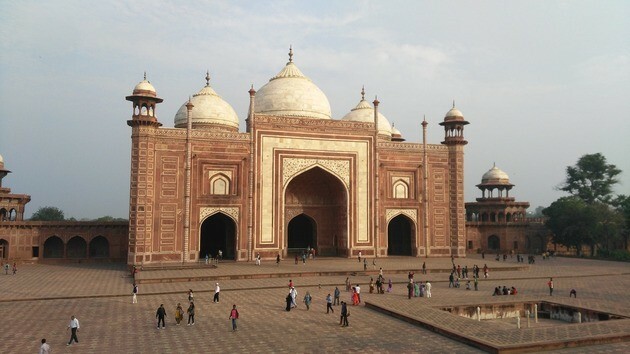
The Taj Mahal has a particularity: it expresses the emperor's cosmopolitan vocation and the atmosphere of cultural openness that existed in those years among Muslim leaders.
By then, as today, Hinduism was the majority religion in India. However, King Shah Jahan had made Islam the second religion. Shah Jahan did not impose Islam, although he promoted it. In effect, the emperor struck a balance by proclaiming religious tolerance.
Along with this, the emperor had important relationships with the outside world, and admired all the elements of other cultures that could be used for the benefit of his own.
Jahan promoted an art that involves both the aesthetic values of Islam, as well as those of Persian and Indian art, certain Turkish elements and even Western plastic techniques.
Influence of oriental art
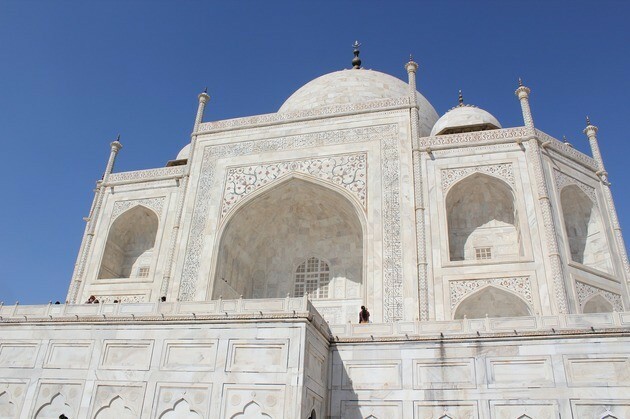
The Mughal dynasty, of which Jahan was the representative at the time, had its beginnings in Babur, a descendant of the Geniskánids and Timurids, who settled in India around 1526. His grandson, Akbar, asserted Mughal sovereignty over India and already had eclectic tastes that were expressed in the art of his empire.

Jahan is inspired by at least two previous buildings available in his surroundings: the mausoleum of his father, Jahangir, from which he takes the idea of making minarets, and the mausoleum of his grandfather, Akbar, from where he got the idea of building turrets around the central core and the four portals.
Mughal tombs had inherited symmetry, dome, and iwan from the Persians. It is understood by iwan a rectangular vaulted space, closed on three sides and opened on one by an arch, such as the main entrance to the mausoleum of the king's beloved.

The central garden of the complex is also, in fact, of Persian inspiration, as well as some poems that decorate the building. The word itself Taj It is of Persian origin, and it means 'crown'.
The colonnade of arches that complete the interior walls are typical of Hindu architecture. You can also see different symbolic and decorative elements that merge the Hindu culture with the Muslim.
Influence of western art
Jahan was frequently visited by personalities from the Western world, who had business interests in the Eastern world. Far from being closed to the exchange, Jahan found it fascinating to learn about other cultures, so he appreciated the artistic techniques that the Europeans introduced him to during his visits.
The decoration of the Taj Mahal was made using a technique widely developed in Europe during the Renaissance: the pietra dure or 'hard stone'. This technique consists of inlaying precious and semi-precious stones in compact surfaces such as marble, for example, until it is possible to compose images and decorative elements of different types.

Emperor Shah Jahan found great beauty in the technique of pietra dura, and had the walls of the mausoleum lined with marble encrusted with precious stones or gems, for which he had a large number of specialist craftsmen come.

They also used the stone relief and the openwork in marble. The decoration was based on all kinds of inscriptions and vegetal and abstract elements. At least 46 botanical species can be found represented in the building.
Its symbols are Islamic
The Taj Mahal is a great symbolic representation of earthly and heavenly life according to the Islamic religion. Their meanings were studied by the researcher Ebba Koch before the entrance to the interior of the mausoleum was prohibited.
According to specialists, the general plan of the whole reveals the world / paradise duality in the two halves in which it is conceived: one half made up of the mausoleum and the garden of the tomb, and the other half made up of a mundane area, which includes a market. The two sides are, in a way, mirroring each other. The central square serves to express the transition between the two worlds.

The garden is the heart of the place: an earthly image of paradise according to Islam. It is made up of four squares with central channels that represent, according to the sources consulted, the rivers of paradise described in the Koran. In the center, there is a pond where these canals intersect, a symbol of the heavenly pond that quenches thirst upon reaching paradise.
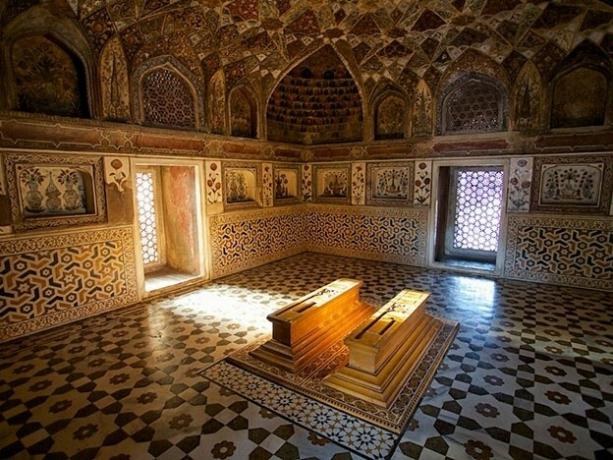
The mundane zone is lined with red sandstone to reinforce the idea of its terrestrial character. The mausoleum, on the other hand, is the only building covered entirely in white marble, a symbol of spiritual enlightenment.
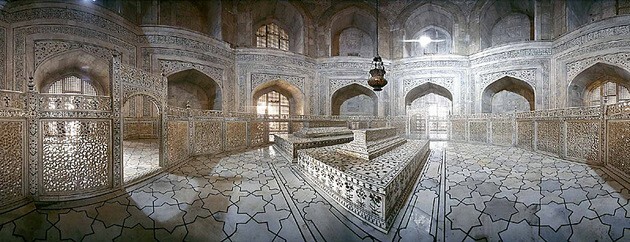
The mausoleum thus becomes an image of the heavenly abode, spirituality and faith of Mumtaz Mahal and the emperor. It was made with Makrana marble, from India.
All the insideTherefore, it is conceived as an image of the eight paradises described in the Koran. In the center of the mausoleum, is the Sancta Sanctorum, the tomb of the beloved Mumtaz Mahal.

You can see details of the interior of the Taj Mahal in this video:
Brief history of the Taj Mahal: a promise of love

Arjumand Banu Begum came from a Persian noble family and was born in the city of Agra, where the mausoleum is located.
The young men had been married when Arjumand Banu Begum was 19 years old, and they loved each other from the first moment they saw each other. By making her his wife, Jahan gave her the title Mumtaz Mahal, which means 'the chosen one of the palace'.
The empress was not Jahan's only wife, as it was typical of Muslim culture for the patriarch to have a harem. However, Mumtaz Mahal was the favorite.
Jahan's beloved wife was also her advisor, accompanying him on all his expeditions, since the emperor could not conceive of the possibility of parting with her.
Together they had thirteen children and Mumtaz Mahal managed to get pregnant for the fourteenth time. While she was pregnant, the empress accompanied her husband on a military expedition to Deccan to quell a rebellion. But when the hour of delivery came, Mumtaz Mahal did not resist and passed away.
Shortly before she died, she asked her husband to build her a mausoleum where she could rest for eternity. Shah Jahan, dazed by grief, decided to fulfill this promise and, since then, has lived immersed in the memory of his beloved.
The Tal Mahal: glory and ruin of an emperor
It is evident that a construction like the Taj Mahal had to imply a significant economic investment, not only because of its excessively luxurious physical characteristics, but also because was built in record time, considering its dimensions and level of perfection.
This speaks for itself of the immensity of wealth that Emperor Jahan possessed and the power of his dominions. However, the intensity of the work was the cause of the economic ruin of the emperor.
Indeed, in order to quickly complete the complex, Jahan had to hire more than twenty thousand artisans from all over the known world. The problem was not only paying them, it was also supplying food in such proportions.
In addition to depleting the economic resources of the empire, Jahan diverted food destined for the people from him to feed the artisans who worked in the palace. This resulted in a terrible famine.
Little by little, Jahan led the empire to ruin and, despite having ruled for a few more years, his son dethroned him and had him imprisoned in the Red Fort until his death in 1666. Since then, he has lain with his beloved wife.
Poem to the Taj Mahal of Tagore
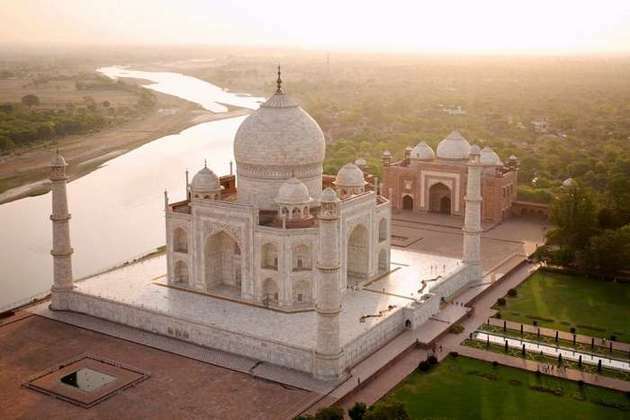
The love story between Shan Jahan and Mumtaz Mahal has been a source of inspiration around the world. According to experts, this personal love story contrasts with the abstract concept of love in India while coinciding with the notion of Western romantic love.
Either by contrast, or by familiarity, the Taj Mahal is so impressive that it has managed to establish itself as a symbol of eternal love. For this reason, neither artists nor writers have managed to escape its spells. Thus, Rabindranath Tagore (1861-1941), a Bengali poet and artist who was awarded the Nobel Prize for Literature in 1913, wrote a beautiful poem dedicated to the power of the loving symbol that is the Taj Mahal.
You knew, Shah Jahan,
that life and youth, wealth and glory,
they drift away in the stream of time.
Therefore, you strove to perpetuate only the pain in your heart ...
You let the gleams of diamond, pearl and ruby
fade away like the magical glow of the rainbow.
But you made this love tear, this Taj Mahal,
will slide immaculately bright
by the cheek of time,
forever and ever.
Oh king, you are no more.
Your empire has faded like a dream
your throne is shattered ...
your minstrels no longer sing,
your musicians no longer mix with the murmur of Jamuna ...
Despite all this, the messenger of your love,
without suffering the stains of time, tireless,
unshakable in the face of the rise and fall of empires,
indifferent to the swing of life and death,
carry the eternal message of your love from age to age:
"I will never forget you, beloved, never."

